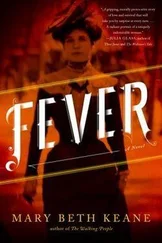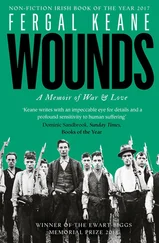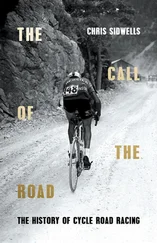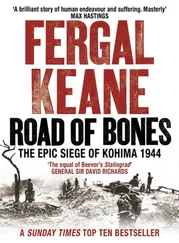For the other ranks experiencing India for the first time, the journey was a blend of chronic physical discomfort, appalling tedium and moments of wonder. Ray Street, who would become a battlefield runner for the 4th West Kents, believed he was witnessing scenes from a Bible story when he paused at some of the bigger stations and huge crowds ‘swept towards the train, dressed in their white flowing garments’. A platform guard gave the signal for departure by striking a length of old railway track with a piece of wood and this precipitated a final rush of hopeful travellers, clinging to doors and windows and the roof. Wary of the onrush, the troops stored their rifles under the wooden seats, having been warned that they would fetch a price of £100 on the North-West Frontier. Street remembered seeing a band of dacoits chained together and led along the platform by a policeman at one of the stations. * They were, he reckoned, the roughest-looking bunch of individuals he had ever seen. His friend, Lance Corporal Dennis Wykes, felt unnerved passing a building where vultures feasted on human corpses. The building had no windows, doors or roof. The bodies were laid out on metal bars and when the bones had been picked bare they would fall through the bars to the ground. ‘It was so strange to me, coming from England like,’ he remembered. What Wykes saw was a Zoroastrian ‘Tower of Silence’, where the body is left to be eaten by vultures so that it does not pollute the earth.
Later on he would become, if not exactly blasé about seeing corpses, then certainly less inclined to worry about them. The train crossed central India on its journey towards Ranchi, through dry scrub and forest, across great rivers and mountains, a five-day journey moving steadily eastwards towards western Bengal, where the high summer temperatures were rendered more tolerable than in the furnace of the plains by the monsoon rains. The schoolmaster Captain Harry Smith was transfixed by the world unfolding outside his carriage. He would remember the light fading to deep blue on the plains as evening came on, the sound of langur monkeys squabbling in the forest by the track, and the fires of wood and animal dung which produced a sweet acrid smell – ‘for me always the smell of India’ – when the train passed near villages.
In the cool of dusk the train would stop and cooks would alight to prepare the evening meal, invariably a concoction that involved bully beef or soya-link sausages and whatever else they had been able to scavenge. Tinned food was favoured, not for its flavour but because it reduced the chance of stomach upsets. Dinner was eaten on the ground in the shade of the carriages and washed down with tea made from water drawn from the engine’s boiler. As Harry Smith recalled, ‘it was tea made with lashings of sugar, condensed milk and water that tasted of engine oil. Delicious!’
Many who took the troop train to Ranchi that June would not come back; others would return without limbs, or brutally disfigured in other ways; some would be wounded in the spirit by the loss of friends or the memories of what they had endured and seen. As the West Kents rattled slowly across India, the generals, British and Japanese, were laying plans to change the face of the Asian war.
*There was a tragic postscript. On the return journey, loaded with over 3,000 people, among them many Italian prisoners of war, the Laconia was torpedoed off the West African coast. Over two thirds of those on board lost their lives.
*A long bamboo rod still used by police to keep public order in India.
*A unit of currency in British-ruled India, roughly equivalent to one sixteenth of a rupee.
*Dacoits are bandits or outlaws frequently operating in large groups.
By the middle of 1943 General Slim knew his enemy well and was certain that the fight to retake Burma would be hard and bloody. Of the Japanese soldier he wrote: ‘He fought and marched till he died. If five hundred Japanese were ordered to hold a position we had to kill four hundred and ninety-five before it was ours – and then the last five killed themselves. It was this combination of obedience and ferocity that made that Japanese Army, whatever its condition, so formidable, and which would make any army formidable.’ The previous November, British and Indian forces had stumbled to disaster in the Burmese province of Arakan in a vain attempt to drive the Japanese back and begin the recapture of Burma. After an initial advance, the Japanese had driven the British and Indian forces back. No ground had been gained despite a casualty toll of 5,057 killed, wounded or missing. *
The Japanese used the tactics of outflanking and encirclement that had caused Slim’s troops such anguish on the retreat from Burma. The terrain on which they fought was ribboned by rivers and streams, harboured numerous swamps, and was bordered to the west by the sea and to the east by the Mayu range of hills. These rose to 2,000 feet at their highest and were covered in dense forest. It was, recalled one British officer, ‘the sort of jungle country in which there could be no front line’, covered in thick primary forest, full of exotic plants and animals, and providing awe-inspiring views, and one of the very last places on earth you would choose to fight a war. When the south-west monsoon arrived, rainfall could reach as much as two hundred inches. The tracks became impassable and the waterways were the only practical means of movement. Even these, swollen with new rain, became, in the words of a senior British commander, ‘very formidable obstacles, all of which have to be bridged to allow passage of troops and transport … Indeed campaigning in the monsoon in Burma may be said to be one of the most arduous operations anywhere in the world today.’ A staff officer sent to investigate wrote: ‘our troops were either exhausted, browned off or both, and both Indian and British troops did not have their hearts in the campaign. The former were obviously scared of the Jap and demoralised by the nature of the campaign i.e. the thick jungle and the subsequent blindness of movement, the multiple noises of the jungle at night, the terror stories of Jap brutality … the undermining influence of fever, and the mounting list of failures.’ Just as had happened on the retreat the previous year, Slim found himself dispatched to lead the ground operations when it was already too late to effect change. Yet it was here in the Arakan that Slim was now planning his first offensive against the Japanese.
The failure of the first Arakan campaign was rooted in practical and political problems. The battle readiness of the troops was paramount. Over the previous eighteen months the Indian Army had recruited massively. At one point recruits were being dispatched to training centres at a rate of 50,000 per month. There had been too little time to turn these raw recruits into soldiers ready for the challenge of the Arakan, or to prepare the British troops fighting alongside them for jungle warfare. The cream of the Indian Army was fighting overseas, where resources were being devoted overwhelmingly towards the fighting in North Africa.
Looming over it all were the politics of the Grand Alliance. Since the attack on Pearl Harbor in December 1941 and the loss of the Philippines the following April, American ships and planes had routed Japan’s carrier fleet at the Battle of Midway on 4 and 5 June 1942. Four carriers, several battleships, around 275 planes, and nearly 5,000 men were lost. Yet the British were still sitting in the positions to which they had retreated after the fall of Burma. There were many in Washington only too keen to accuse London of lassitude. A song doing the rounds of senior American military figures after the fall of Malaya and Singapore that gave an indication of American attitudes to the officer class of the British empire:
Читать дальше












